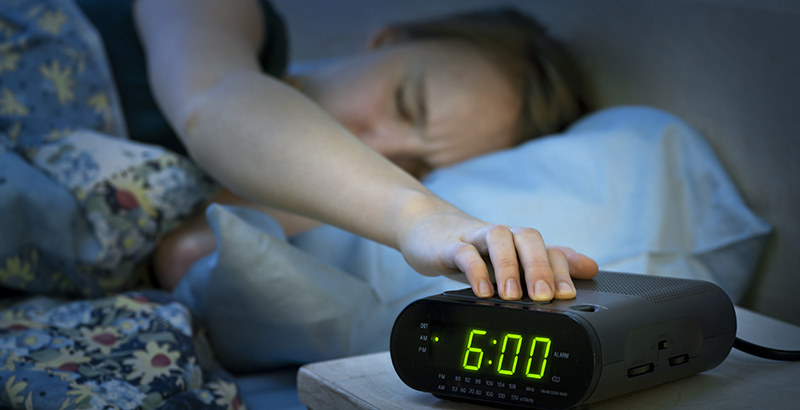Lewis: Students Returning to School This Fall Will Face a New, Changed Reality. 1 Way to Help — Start Classes Later So They Can Get More Sleep

Schools are still determining what changes they’ll need to make before reopening in the fall. While many will remain online only for now, others are still grappling with the complexities involved: How will they ensure social distancing in the classroom? Will face masks be required? What about sharing items like textbooks, or microscopes, or band instruments?
To guide these decisions, the American Academy of Pediatrics, the Centers for Disease Control and Prevention and the National Federation of State High School Associations have all released detailed recommendations. But there’s an additional key health consideration — also called out by both the academy and the CDC — that secondary schools should be taking into account, especially now: the critical role of sleep for teenagers.
Although teens need eight to 10 hours of sleep a night, 43 percent of high schoolers average less than six hours. This has profound effects on their academic success and overall health — and school start times are a large part of the problem.
When kids hit puberty, there’s an accompanying circadian rhythm shift that makes it harder for them to fall asleep until late at night, which means the only way for them to get enough sleep is by waking later in the morning. (Even if they go to bed early, they’re generally not able to fall asleep until about 11 p.m.) So, when schools start too early, teens wind up sleep-deprived.
This affects everything from alertness to attendance to graduation rates. Student athletes who don’t get enough sleep are more likely to get injured. A study published earlier this year in the Journal of Clinical Sleep Medicine found that when schools shifted to later start times, the rate of adolescent motor vehicle crashes dropped. And a new meta-analysis confirms that teens who don’t get enough sleep are at substantially higher risk for depression, anxiety and anger.
Because of the link between school start times and sleep, leading organizations from the American Medical Association to the American Psychological Association recommend that middle and high schools start at 8:30 a.m. or later. Yet data released in February by the National Center for Education Statistics show that during the 2017-18 school year, only 17.5 percent of U.S. public high schools met this guideline.
Especially now, with the pandemic isolating teens from their schools and their peers, the emotional resiliency that sleep helps provide is extremely important. Sleep is also an equity issue. Racial and ethnic disparities in sleep quality and duration have been well documented and contribute to the academic achievement gap. This is why researchers have called out the social justice implications of school start times.
Amid all the uncertainty and upheaval, one thing is clear: We can’t go back to the way things were.
Changing school start times is a policy-level change that’s been proven to work. Yet far too often, discussions about enacting developmentally appropriate start times get bogged down by the logistics of making the shift. Changing when the school day starts and ends affects bus routes and parents’ schedules. Afterschool activities like sports practices and games get pushed back, which can mean adding lights to fields. Even so, a report by The Hamilton Project (a Brookings Institution initiative) conservatively estimated a 9 to 1 ratio of benefits to costs for delaying school start times.
It’s often tempting to avoid change because of the short-term disruption. But sometimes there are compelling reasons to act – like right now. Previous schedules have been swept away. Schools are re-envisioning how to best meet students’ academic and health needs, which will likely require modifying bus transportation, teacher schedules, sports schedules and more. As schools implement these necessary adjustments, they can help set the foundation for success by taking the importance of sleep into account.
When students do return to campus, they’ll face a new, changed reality. Rather than compounding their challenges, let’s help them get the sleep they need.
Lisa L. Lewis has written about parenting, public health and education for The New York Times, The Atlantic, TIME, The Washington Post, Slate, the Los Angeles Times, and others. She’s currently working on a book about teenagers and sleep.
Get stories like these delivered straight to your inbox. Sign up for The 74 Newsletter

;)